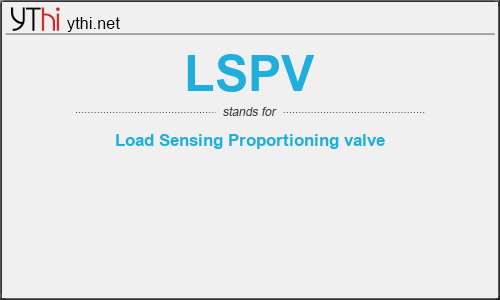What does LSPV mean? What is the full form of LSPV?
The full form of LSPV is Load Sensing Proportioning valve
The load sensing proportioning valve is located in the brake system for the rear wheels. It functions to control the brake fluid pressure from the master cylinder in response to the vehicle load and prevents early locking of the rear wheels. This provides directional stability under hard braking.
Just so, how does a load sensing valve work?
A load sensing valve is found on a braking system of a car or a truck. It detects ,by way of a connecting rod; the weight or downward movement of a vehicle caused by a heavy load and allows more brake fluid/air/pressure to be applied to the rear brakes. As a vehicle moves forward, the front brakes do most of the work.
Furthermore, how does a height sensing proportioning valve work? The proportioning valve is installed on vehicle’s with front disc, rear drum brake systems. They provide balanced braking during sudden, hard braking by restricting fluid pressure to the rear brakes. A height sensing proportioning valve is installed in the hydraulic line leading to the rear drums.
Then, what happens when a proportioning valve goes bad?
Since the proportioning valve decreases the pressure sent to the rear brakes, the main symptom the valve is going bad is the rear wheels locking up when the brakes are applied. Furthermore, the wheels will lock up more easily on wet surfaces. The rear brakes may feel touchy when applied even gently.
How does auto load sensing work?
If the water level seems too low, or if the washer does not fill completely, auto–sensing helps stabilize the amount of water used. The washer senses the size of the load and adds the correct amount of water for the load size. You may notice during a cycle that the wash load is not completely submerged in water.
LSPV
means
Load Sensing Proportioning valve![]()
Translate Load Sensing Proportioning valve to other language.


Leave a Reply
You must be logged in to post a comment.